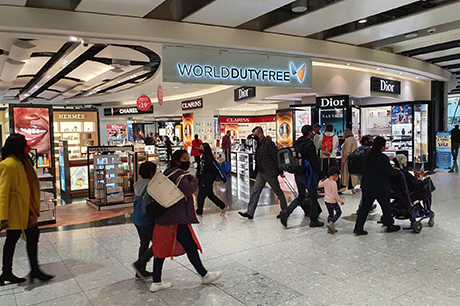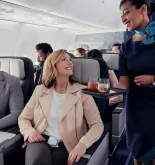A travel retailer is a firm that develops, executes, or offers travel services. It is likely to sell travel insurance to its users in support of and under the guidance of limited travel insurance players. Retail sales, which take place when a consumer is traveling and is obliged to pay taxes and customs is referred to as travel retail. It is a retail segment that serves international customers. It has an enormous income prospect and a variety of marketing options. The global travel, aviation, and tourism sectors rely on duty-free and tourism retail to produce substantial revenues. The percentage of foreign passengers has commenced the growth of the industry massively in the past few years.
Fortune Business Insights states that the global travel retail market size was valued at USD 51.28 billion in 2021. The global market is projected to grow from USD 55.74 billion in 2022 to USD 96.11 billion by 2029, exhibiting a CAGR of 8.1% during the forecast period.
COVID-19 Impact
Governments across the world are implementing lockdown and other travel restrictions to reduce the spread of coronavirus infection. This issue has drastically reduced the number of tourists by air and sea, endangering the entire travel and tourism sector. To maintain their health throughout the pandemic, travelers now favor wellness-related products. Duty-free merchants will have more options due to this element to offer customized goods. Growing demand from consumers for Personal Protection Equipment (PPE) and products, such as sanitizers, gloves, face masks, and additional products, amid the pandemic created newer avenues for duty-free retailers’ business growth.
Below mentioned are the top 10 players operating in the market.
- Lagardere Travel Retail (Lagardere Group) (France)
- DFS Group Ltd. (Hong Kong)
- Dufry AG (Switzerland)
- King Power International Group (Thailand)
- Aer Rianta International (Ireland)
- The Nuance Group AG (Switzerland)
- Lotte Duty-Free (Lotte Hotel) (South Korea)
- Gebr. Heinemann SE & Co. KG (U.S.)
- Duty-Free China Group Co. Ltd. (CDFG) (China)
- Samsung Group (South Korea)
Following are the four main channels that make up the industry, each being entirely different from another:
Airports
Stores that allow air travelers to shop while during their travel can be found at both the arrivals and departure areas of airports all around the world. When it comes to sales and the number of passengers, it is the largest channel in the travel retail sector and the main driver of the sector’s expansion.
Airplanes
Pre-ordered or on-board purchases of goods are accessible during flights, as are printed catalogs or digital entertainment options. It is a channel that commands the full attention of passengers yet necessitates carefully chosen strategic merchandise and meticulous attention to detail in order to ensure success.
Cruise ships
It offers possibilities for shopping at sea while moving between ports globally and allowing passengers to utilize the lengthy transit time to repeatedly explore travel retail offerings. It is a network that is rapidly expanding, especially as more and more young people are drawn to it.
Downtown duty free
It offers opportunities for shopping that let visitors from other countries buy tax-free goods right away or reserve them to pick up after customs at the airport. It is a channel that focuses on the rapidly expanding trend of duty-free shopping outside of the typical channels, particularly in the Asia Pacific region.
Opportunities in the Industry
Demand for travel retail services is mostly driven by the tourism and travel industries’ rapid growth. The expansion of the middle class and increased urbanization, however, are the key drivers of the market. Additionally, the growth of Low-cost Airlines (LCC), international travelers, and air travel are all contributing factors. Moreover, the market growth is further fueled by rising digitization of the retailing process, which will enable enterprises to maximize revenues.
Challenges in the Industry
Various retail goods are mostly branded. They are luxurious goods of a high caliber. This feature allows companies to charge extra costs for travel-associated goods, which lowers demand from lower-income traveler groups. Furthermore, a barricade to purchasing goods is produced by the lack of knowledge of consumers regarding fresh product launches and advancements, which further restrains the market development.
Role of Millennial Travelers in Industry Growth
The market expansion is fueled by a rise in international passengers. Demand for products is fueled by an increase in domestic and international travelers, which propels market expansion. More than any other generation, millennials take more vacation days, but they don’t want to go on adventures every day. They want variety and personally tailored vacation experiences. The travel preferences of the millennial generation include leisure travel, family visits, and romantic getaways. Their preference for variety is great news for destinations and travel agencies because they want to experience different holiday types.



